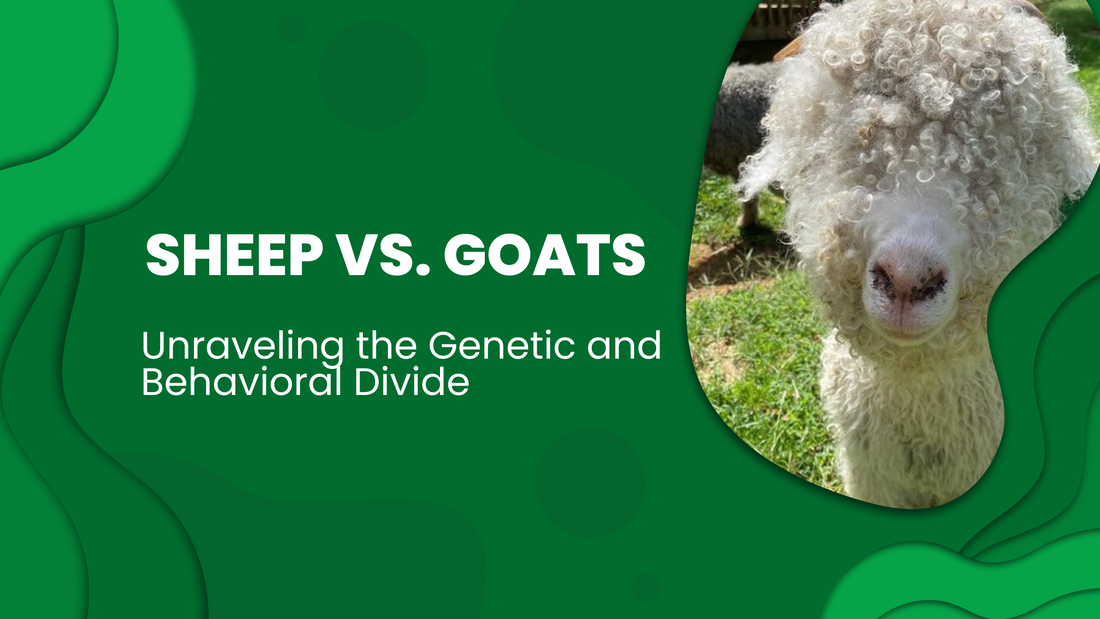When it comes to the animal kingdom, few creatures are as charming and quirky as sheep and goats. These fleecy friends may seem similar at first glance, but upon closer inspection, their genetic makeup and behavioral tendencies reveal fascinating distinctions. Let's explore the sheep vs. goats debate and see what sets these fleecy friends apart.
At the core of the sheep vs. goats debate lies their genetic composition. While both belong to the Caprinae subfamily, sheep (Ovis aries) and goats (Capra aegagrus hircus) stand as distinct species, each boasting a unique chromosome count. Sheep typically have 54 chromosomes, whereas goats sport 60. Some might say those extra six chromosomes make goats inherently smarter – a genetic advantage that adds to their charm and cunning nature.

One of the most notable differences between sheep and goats lies in their foraging habits. Sheep are grazers, preferring to munch on short plants close to the ground. In contrast, goats are avid browsers, exhibiting a knack for seeking out leaves, twigs, and shrubs. Their agile nature allows them to explore diverse terrains, making them notoriously difficult to contain within fencing – a testament to their adventurous spirit and independent streak.
When it comes to personality, sheep and goats couldn't be more different. Goats are known for their innate curiosity and independence, often finding themselves embroiled in amusing escapades. On the other hand, sheep tend to stick together, driven by a strong flocking instinct. These quirky behaviors make each sheep and goat stand out as individuals, each with their own unique charm and antics.

Another distinguishing feature between sheep and goats lies in their tails. While a goat's tail typically points upward in a perky manner, a sheep's tail hangs down gracefully. Some believe that the raised tail of a goat is an indicator of its curious nature, adding to its endearing charm and playful demeanor.
In the realm of fashion, sheep and goats each have their own signature style. Sheep are renowned for their woolly coats, requiring annual shearing to maintain their iconic look. Angora goats, on the other hand, flaunt a more luxurious aesthetic with their natural curly mohair, which is shorn twice a year. Whether you prefer the classic elegance of sheep's wool or the glamorous allure of goat's mohair, there's no denying the sartorial charm of these fiber-producing animals.
A closer look at the facial features of sheep and goats reveals further distinctions. While some goats boast beards, sheep typically don't, although some may surprise you with their stylish manes. Additionally, sheep flaunt a divided upper lip, while goats sport a seamless lip line – subtle yet significant details that add to their individual charm.

Horns are another distinguishing feature between sheep and goats. While all male sheep have horns, only some breeds have horned females. In contrast, all goats, both male and female of all breeds, boast horns. These horns come in a variety of shapes and sizes, from spiral horns curling upwards and out to straight horns growing linearly, each adding to the unique beauty and character of these remarkable animals.
So whether you find yourself drawn to the inquisitive charm of goats or the gentle grace of sheep, there's no denying the unique appeal of each fleecy friend.
